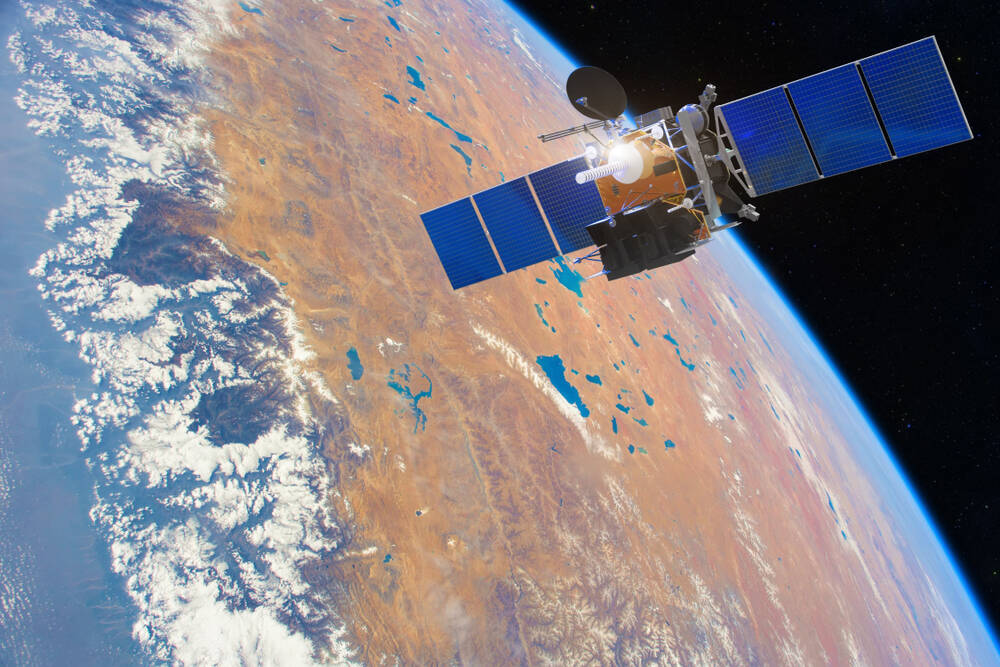Uncle Sam Explores Satellites That Can Create Propellant Out Of Thin Air

Electric propulsion systems that generate power from the scant air in the outer edges of the atmosphere could drive satellites in very low Earth orbit (VLEO), without the need for conventional propellants – at least in theory.
Armed with $400,000 in funding from DARPA, boffins at the US Department of Energy's Princeton Plasma Physics Laboratory (PPPL) and academics at the George Washington University (GWU) are building prototypes for the technology.
A satellite's lifetime is usually determined by the amount of fuel it carries, because they need to fire thrusters to stay in orbit. Once these sats run out of juice to counteract any drag or other annoying effects they experience, they fall into the atmosphere and burn up (or occasionally fall to Earth).
Enter "air-breathing electric propulsion" (ABEP) – a system whereby the satellite gases up on the go using the very air through which it flies. The way it works is simple: A device aboard a VLEO satellite sucks in air from the upper atmosphere and funnels particles into an ionization chamber to create plasma. The resulting charged particles can be accelerated outwards to propel the spacecraft.
Such systems, however, only work in very low Earth orbit at altitudes of 100 kilometres – where there is still enough of a faint atmosphere to collect air.
"There is air available at VLEOs. So, instead of launching rockets with these propellants – such as xenon, krypton or argon – we can use what is naturally available: air," explained Yevgeny Raitses, a managing principal research physicist at PPPL, who is leading that lab's efforts on the project.
"This should allow us to reduce the mass of satellites or allow them to dedicate the difference in mass to other aspects of the device. It might also extend the lifetime of the device."
- FAA gives SpaceX a bunch of homework to do before Starship flies again
- ESA's ERS-2 satellite began to come apart earlier than predicted
- Chunks of deorbiting ESA satellite are expected to reach the ground
- Out with the old, in with the new as 100 Starlink satellites take atmospheric exit
Michael Keidar, a GWU professor who runs a micropropulsion and nanotechnology lab and is working on this project, previously wrote: "In addition to payload benefits, these altitudes are uncrowded, provide fast orbit decay to maintain the environment, resilience from difficult-to-propagate orbit dynamics, and provide the propellant – air – for air-breathing propulsion options."
Building APEB engines is tricky. The burst of ions ejected from the satellite to move the thing must be carefully managed. "It is important in order to avoid charging the satellites," Raitses added. If a craft becomes electrically charged, it could potentially attract the outgoing ions back to the engine – and cause the sat to jerk backwards instead of moving forwards.
Researchers at the federal lab and GWU – a team that includes doctoral student Anmol Taploo, who was first author of a paper that sparked this whole endeavor – are trying to effectively neutralize outgoing ions, while creating enough thrust. Raitses and his colleagues will analyze the density and temperature of the plasma, and velocities of positive ions. These measurements will be compared against model simulations.
The idea of ABEP technologies has obviously piqued the interest of space agencies. The European Space Agency, for example, has explored the technology for years. In 2018, engineers built a prototype that managed to turn air molecules into propellant, with the goal of eventually designing a system that could fly at 200km altitude at a speed of about 7.8 kilometers per second.
"This result means air-breathing electric propulsion is no longer simply a theory but a tangible, working concept, ready to be developed, to serve one day as the basis of a new class of missions," ESA aerothermodynamics engineer Louis Walpot declared at the time. Nearly six years later, the technology isn't close to being deployed on real satellites – but researchers may be getting closer. ®
Elon Musk Takes On Government 'Censorship': A Clash Of Titans In The Digital Arena
Elon Musk's recent endeavors to challenge government-led content takedowns mark a significant development in the ongoing... Read more
Apple Faces Backlash Over Destructive IPad Advertisement
Description of the iPad advertisement:Analysis of the backlash:Impact on Apple's reputation:Apple's response and actions... Read more
Apple's Latest Breakthrough: Unveiling The Most Powerful AI Chip Yet
In a move that underscores its commitment to advancing artificial intelligence (AI) capabilities, Apple has recently int... Read more
Microsoft's Renewable Energy Leap: A Big Step Towards Sustainable Data Centers
In a significant move towards sustainability, Microsoft recently finalized a monumental deal with Brookfield Renewable, ... Read more
Data: The Sword And Shield Against Disinformation
In the age of information overload, distinguishing fact from fiction has become a daunting task. Disinformation, the del... Read more
Taking Flight: Volocopter's Quest To Revolutionize Urban Mobility Gains Momentum
Volocopter, a pioneering company in the field of urban air mobility, is on a mission to transform how people move around... Read more

